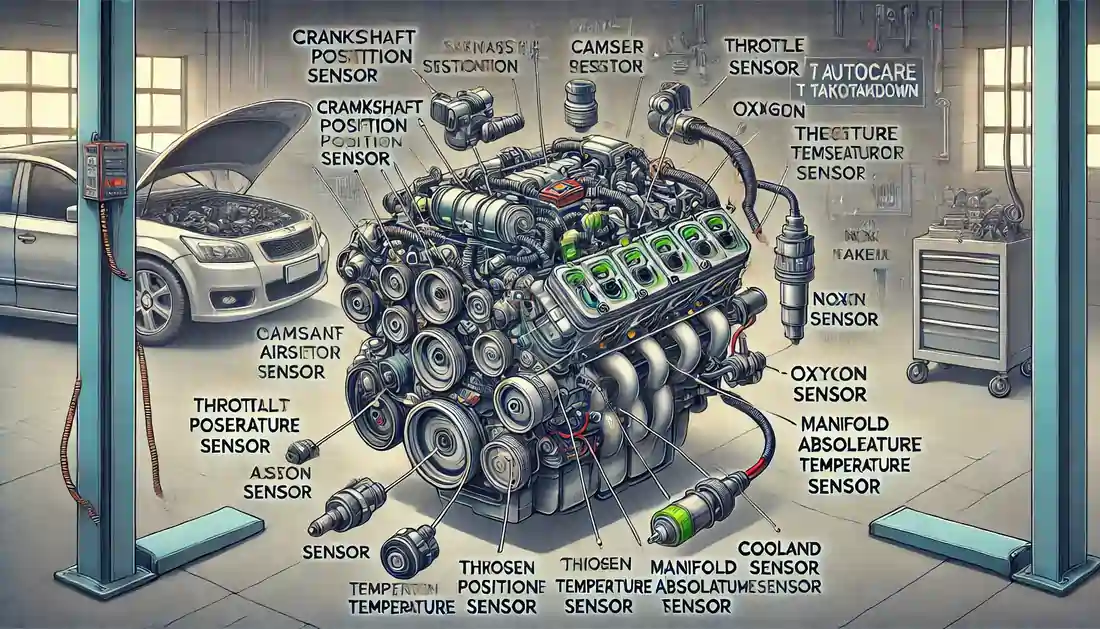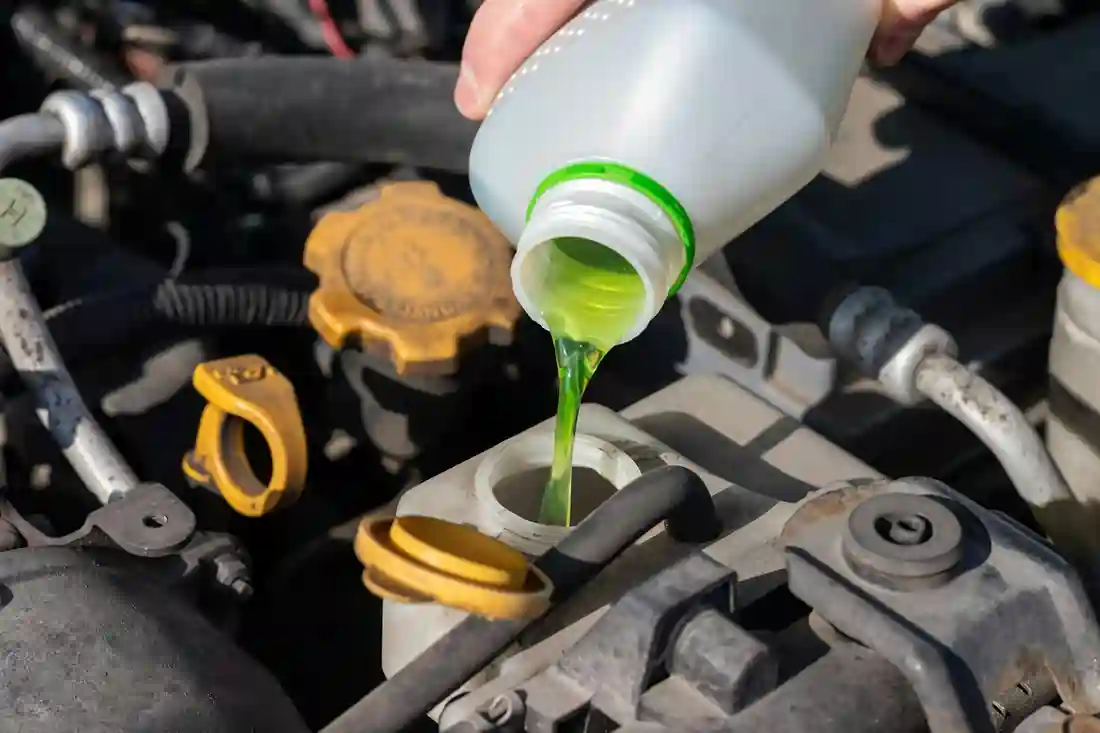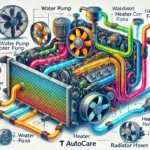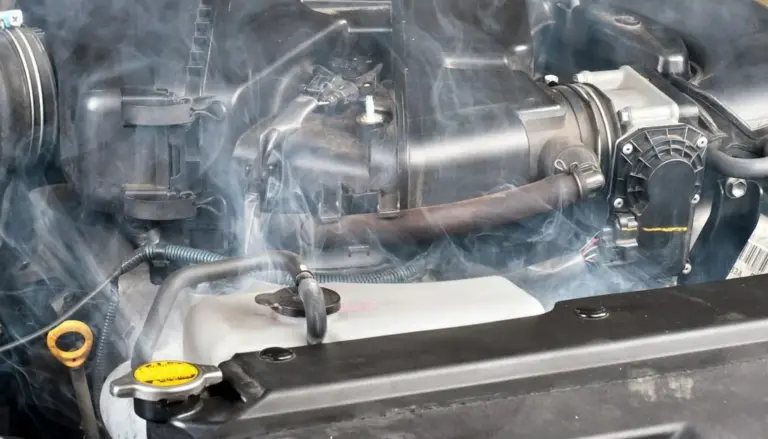Coolant Temperature Sensor Replacement
in Broken Arrow
Your vehicle’s engine operates optimally within a specific temperature range, just like a person thrives within a comfortable body temperature. The coolant temperature sensor plays a vital role in maintaining this balance, acting as a silent guardian. It continuously monitors the engine coolant’s temperature and transmits this crucial data to the Engine Control Unit (ECU), the vehicle’s brain. This information is essential for the ECU to regulate fuel mixture and ignition timing, ensuring peak engine performance.
At T Autocare Takedown, we specialize in keeping your car healthy. One of our specialties is expert coolant temperature sensor replacement. If you suspect your sensor might be failing, this guide will equip you with the knowledge to understand its function, the signs of trouble, and the replacement process. We’ll also highlight the benefits of entrusting the job to our experienced mechanics.
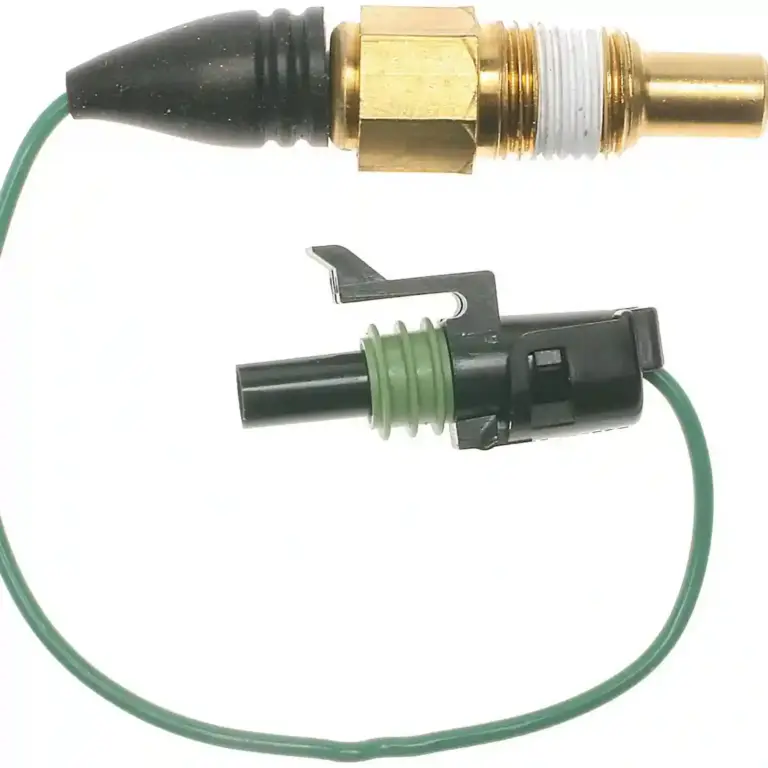
What is a Coolant Temperature Sensor?
Imagine a tiny sentry dipped into the engine coolant. That’s essentially the coolant temperature sensor. It’s a small but mighty component constantly gauging the temperature of the coolant flowing past it. This sensor doesn’t just measure the temperature; it translates that information into an electrical signal that the Engine Control Unit (ECU) can understand.
The ECU relies on this signal to fine-tune various engine functions for optimal performance. These functions include:
- Fuel Mixture: The ECU adjusts the air-to-fuel ratio based on the engine temperature. A cooler engine might need a richer mixture (more fuel), while a hot engine might need a leaner mixture (more air) for efficient combustion.
- Ignition Timing: The timing of the spark plugs firing is crucial for smooth engine operation and fuel efficiency. The ECU uses the coolant temperature sensor data to optimize ignition timing.
There are two main types of coolant temperature sensors:
- Thermistors: These sensors decrease their electrical resistance as the temperature increases.
- Positive Temperature Coefficient (PTC) Sensors: These sensors also exhibit decreased resistance with rising temperatures.
The specific type of sensor used will depend on your vehicle’s make and model.
Signs of a Faulty Coolant Temperature Sensor
A failing coolant temperature sensor can throw your engine’s performance off balance, potentially leading to problems down the road. Here’s what to watch out for:
- Erratic Temperature Gauge Readings: A bouncing or fluctuating temperature gauge reading on your dashboard could indicate the sensor sending incorrect signals to the ECU. This can cause the gauge to display inaccurate engine temperature information.
- Engine Overheating or Running Too Cool: A malfunctioning sensor can disrupt the ECU’s ability to regulate engine temperature effectively. This might lead to the engine overheating, which can cause serious damage. Conversely, the sensor could send a signal indicating the engine is cooler than it actually is, causing the engine to run too cold, which can also lead to performance issues.
- Decreased Fuel Efficiency: The ECU relies on the sensor data to determine the optimal fuel mixture for efficient combustion. If the sensor malfunctions, the ECU might provide an incorrect fuel mixture, leading to wasted fuel and decreased gas mileage.
- Illumination of the Check Engine Light: The check engine light can come on for various reasons, but a faulty coolant temperature sensor is a common culprit. This light serves as a warning that something is wrong with your vehicle’s emissions system or engine performance, and it’s best to have it checked by a qualified mechanic.
Don’t ignore these warning signs! Early detection and prompt replacement of a faulty coolant temperature sensor can prevent costly engine repairs and ensure your vehicle runs smoothly and efficiently. In the next section, we’ll explore the replacement process, but it’s important to prioritize safety first.
The Replacement Process: Safety First!
Before diving into the coolant temperature sensor replacement process, safety is paramount. Here are some crucial steps to take before you begin:
- Ensure the engine is completely cool. Working on a hot engine is dangerous and can cause burns. Allow the engine ample time to cool down completely before touching any components.
- Disconnect the battery negative terminal. This step prevents electrical shock while working on the vehicle’s electrical system.
Once you’ve prioritized safety, we can proceed with the replacement steps. It’s important to note that the specific location and removal process for the coolant temperature sensor can vary depending on your vehicle’s make and model. Here’s a general overview:
- Locate the Sensor: Consult your vehicle’s repair manual for precise instructions on where the coolant temperature sensor is situated. It’s typically found near the thermostat on the engine block or cylinder head.
- Removal:
- Disconnect the electrical connector by gently pressing the tab and pulling it away from the sensor.
- Using the appropriate wrench or socket size specified in your repair manual, loosen and remove the old sensor.
- Depending on your vehicle, you may need to drain some coolant before removing the sensor. Be sure to dispose of the used coolant responsibly according to local regulations (consult your repair manual or local recycling centers for proper disposal methods).
- Installation:
- Clean the threads where the new sensor will be screwed in to ensure a proper seal.
- Hand-tighten the new sensor first.
- To prevent leaks, use a torque wrench to tighten the sensor to the manufacturer’s specifications as outlined in your vehicle’s repair manual. Overtightening can damage the sensor or threads, while under-tightening can cause leaks.
- Testing and Refill: After installing the new sensor, reconnect the electrical connector. Refill the coolant system following the proper procedures for your vehicle, which may involve bleeding trapped air from the system (consult your repair manual for specific instructions).
Professional Recommendation:
While the replacement process may seem straightforward, it can involve complexities and safety concerns. Factors like reaching the sensor location, using the correct tools, and proper torque specifications are crucial for a successful and safe replacement. We at T Autocare Takedown recommend leaving this task to our certified mechanics to ensure proper installation and avoid any complications. In the next section, we’ll discuss the benefits of choosing T Autocare Takedown for your coolant temperature sensor replacement needs.
Benefits of Choosing T Autocare Takedown
When it comes to coolant temperature sensor replacements, trust the experts at T Autocare Takedown. Here’s why we’re the perfect choice for your vehicle:
- Experienced Technicians: Our team consists of highly qualified and experienced mechanics who possess the expertise to handle all your auto repair needs, including coolant temperature sensor replacements. They stay up-to-date on the latest repair techniques and procedures for various vehicle makes and models.
- High-Quality Replacement Parts: We use only top-quality, brand-name replacement parts for coolant temperature sensor replacements. This ensures optimal performance, reliability, and longevity for your vehicle’s engine.
- Efficient and Reliable Service: We understand the importance of getting your car back on the road quickly. Our team is committed to providing efficient and reliable service, completing the replacement process in a timely manner.
- Your Satisfaction is Our Priority: At T Autocare Takedown, your satisfaction is our top priority. We strive to provide exceptional customer service and ensure you’re completely satisfied with the repairs performed on your vehicle.
- Peace of Mind: By entrusting the coolant temperature sensor replacement to our professionals, you gain peace of mind knowing the job is done correctly. This can help prevent further engine problems and ensure your vehicle operates safely and efficiently.
We understand that some drivers may prefer to attempt the replacement themselves. However, in the next section, we’ll discuss some factors to consider when deciding between DIY and professional auto repair.
DIY vs. Professional Coolant Temperature Sensor Replacement: Making the Right Choice
Replacing a coolant temperature sensor might seem like a relatively simple task at first glance. However, there are several factors to consider before deciding to tackle it yourself or entrusting it to a professional mechanic. Here’s a breakdown of the pros and cons of each approach:
Do-It-Yourself (DIY):
Pros:
- Cost-effective: If you’re comfortable working on your car and have the necessary tools, a DIY replacement can be a more affordable option. The cost will primarily involve purchasing the sensor itself.
- Sense of accomplishment: Fixing your car yourself can be a rewarding experience, providing a sense of accomplishment and potentially saving money.
Cons:
- Complexity: While seemingly straightforward, the replacement process can involve unforeseen challenges. Reaching the sensor location can be tricky in some vehicles, and using the wrong tools or improper torque specifications can lead to leaks, damage, or even sensor failure.
- Safety concerns: Working with coolant can be messy, and there’s always the risk of burns if the engine hasn’t cooled completely. Additionally, disconnecting the battery and working with the electrical system requires proper precautions to avoid electrical shock.
- Knowledge and Tools: The success of a DIY replacement hinges on having the right knowledge and tools for the specific vehicle. A repair manual specific to your car model is crucial, along with the appropriate wrenches, sockets, and potentially a torque wrench.
- Time Commitment: Depending on your experience level and any unforeseen complications, the DIY process can take longer than expected.
Professional Repair:
Pros:
- Expertise and Efficiency: Experienced mechanics have the knowledge and tools to handle the replacement efficiently and correctly. They can quickly locate the sensor, ensure proper installation, and dispose of used coolant responsibly.
- Safety First: Professionals prioritize safety by following proper procedures and using the necessary protective equipment.
- Warranty and Peace of Mind: Many repair shops offer warranties on their work, providing peace of mind knowing the job is guaranteed.
Cons:
- Cost: The cost of professional coolant temperature sensor replacement will include labor charges in addition to the sensor itself.
The Bottom Line:
The decision to replace the coolant temperature sensor yourself or seek professional help depends on your comfort level, mechanical skills, and access to tools. If you’re unsure about any aspect of the process, or if you value your time and peace of mind, opting for a professional is generally the recommended approach.
In the next section, we’ll answer some frequently asked questions (FAQs) about coolant temperature sensor replacements.
Frequently Asked Questions (FAQs) about Coolant Temperature Sensor Replacement
This section addresses some common questions regarding coolant temperature sensor replacements:
Q: What causes a coolant temperature sensor to fail?
Several factors can contribute to sensor failure:
- Wear and Tear: Over time, the sensor’s internal components can degrade, leading to decreased accuracy in measuring temperature.
- Electrical Issues: Corrosion on the sensor’s connections or within the wiring harness can disrupt the electrical signal it sends to the ECU.
- Coolant Contamination: Degraded coolant or debris in the coolant system can clog the sensor, affecting its ability to measure temperature accurately.
Q: How often should the coolant temperature sensor be replaced?
Unlike some parts with recommended replacement intervals, coolant temperature sensors typically don’t have a specific mileage or time frame for replacement. However, if you experience the warning signs mentioned in Section 3 (erratic temperature gauge readings, engine overheating/running too cool, decreased fuel efficiency, check engine light), it’s best to have a mechanic check the sensor. They can diagnose the problem and advise you on whether replacement is necessary.
Q: Can I drive with a faulty coolant temperature sensor?
Technically, in an emergency, you might be able to drive a short distance with a faulty sensor. However, it’s highly discouraged. A faulty sensor can lead to engine damage in several ways:
- Engine Running Too Cool: This can cause increased wear and tear on engine components, reduced fuel efficiency, and incomplete combustion leading to increased emissions.
- Engine Overheating: This is a serious condition that can warp cylinder heads, blow head gaskets, and damage other engine components, leading to expensive repairs.
If you suspect a faulty sensor, it’s crucial to address the issue promptly to avoid potential engine problems.
Q: How much does coolant temperature sensor replacement cost?
The cost can vary depending on several factors:
- Sensor Price: The cost of the replacement sensor itself can vary depending on the vehicle make, model, and brand of the sensor.
- Labor Costs: The labor charges for the replacement will depend on the shop’s rates and the complexity of accessing the sensor in your specific vehicle.
- Location: Labor costs can vary depending on your geographical location.
Q: Is it possible to replace the sensor myself, or should I seek professional help?
As discussed in Section 6, the decision depends on your comfort level and skills. While a DIY replacement might seem feasible, factors like sensor location, proper tools, and torque specifications can pose challenges. Professional mechanics have the expertise and ensure a safe and proper installation.
We hope this comprehensive guide has empowered you with valuable information about coolant temperature sensor replacements. If you have any further questions or require assistance with a replacement, don’t hesitate to contact the experts at T Autocare Takedown. We’re here to help your vehicle run smoothly and safely!
Certainly! Here’s a call to action section that you can add to the end of your guide:
Schedule an Appointment Today!
Don’t let a faulty coolant temperature sensor lead to engine trouble! If you’re experiencing any of the warning signs mentioned earlier, or if your vehicle is due for routine maintenance, contact T Autocare Takedown today to schedule your coolant temperature sensor replacement.
Our experienced mechanics will ensure a quick, efficient, and professional replacement, using only high-quality parts. Get your vehicle back on the road running smoothly and safely!
We look forward to hearing from you!
We Make Auto Repair Easy
Call us at (539) 367-3738,
Send a Text at (539) 352-5816, or book a car repair appointment online.
Need a quick repair estimate?
Send us a text!
Learn more about the benefits of texting us.
Our online booking system connects directly with our shop’s schedule, so you get an accurate appointment time.
Related Pages and Posts:

